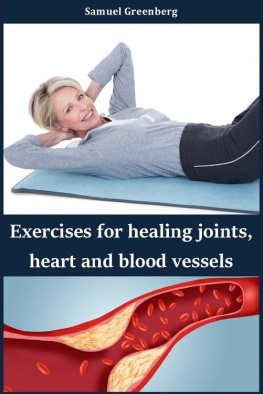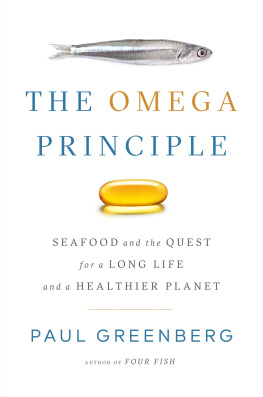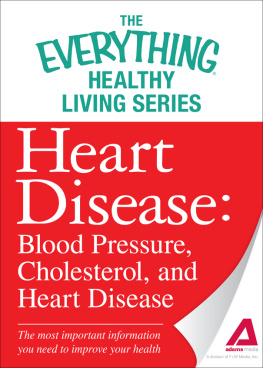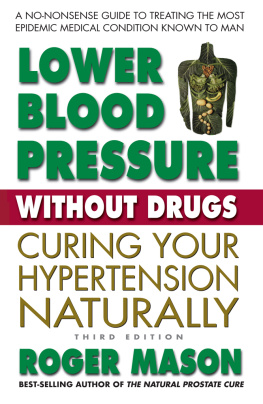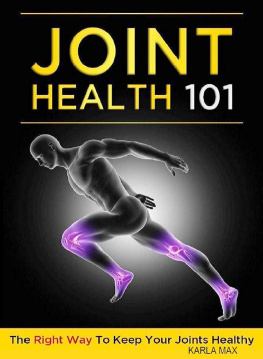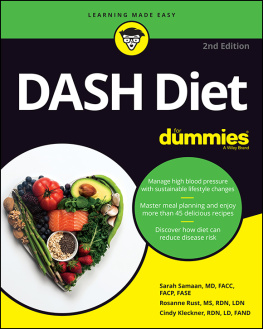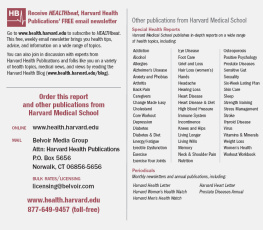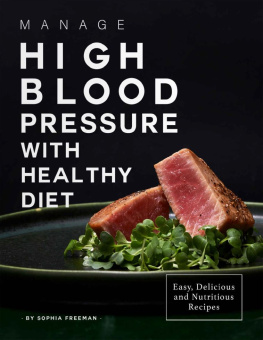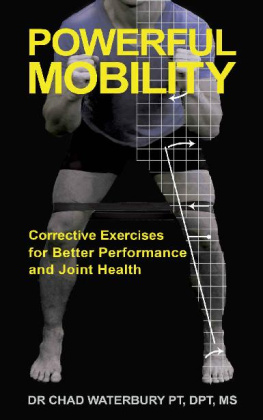Warning the author is not responsible for any undesirable consequences in case of the use of medical products without consultation with the doctor. Every attempt was made to provide accurate data. All information provided in this book does not replace medical advice.
Please note information in this book for educational purpose only.
Every attempt has been made to providing accurate and complete information. Readers recognize that creator is not participating in rendering legitimate, money related or proficient guidance.
By reading this book reader agrees that under no circumstances are the author is not responsible of direct or indirect loses as a result of using information in this book including - but not limited - any possible errors, omissions and inaccuracies.
Various diseases of blood vessels and joints are one of the most common ailments of modern mankind, affecting about half of the world's population. Arthritis and arthrosis, hypertension and varicose veins can significantly overshadow the joy of existence. Maybe now it seems impossible to you, but by performing the sets of exercises described in the book, you can significantly improve your health, permanently get rid of the deposits of salts, cholesterol and pain that are haunting you day and night, find former flexibility in the joints and lightness in the whole body.
Chapter 1. Introduction
The cardiovascular system and the musculoskeletal system of man were formed tens of thousands of years ago, in the process of its biological evolution. And further, throughout the history of social development, the biological nature of man, and with it the heart, blood vessels, joints and spine, has not changed in anything significant. That is, the structure of our body is no different from the body of a prehistoric mammoth hunter.
The organism of modern man is still designed to survive in extreme conditions, for the intensely mobile lifestyle that his distant ancestors led. Such a life required constant expenditure of muscle energy for obtaining food, for combating dangers, for long transitions, for creating a haven, etc.
With the lifestyle of the 21st century, the muscle activity of the vast majority of people is minimal. We forgot how to move, thanks to the proliferation of vehicles, the technical equipment of production weaned us from active physical labor, and the comfort of our home allows us to spend a minimum of effort on improving our everyday life.
All this is completely unnatural for man as a biological being. For many years, insufficient muscle activity (lack of exercise) has a detrimental effect on health. Poor physical development is certainly accompanied by weakening of the immune system. Poorly developed muscles make a person not only physically weak, but also due to low stamina susceptible to bacterial and viral diseases. Being physically underdeveloped, we become unable to resist the environment that we ourselves created or, rather, destroyed it.
In addition, people with a sedentary lifestyle are more likely to be obese, since a decrease in muscle tissue is often replaced by a gain in fat. Obesity is a risk factor, that is, a factor that significantly increases the risk of cardiovascular disease and salt deposition. For people who are accustomed to low physical activity, even insignificant physical activity becomes difficult to tolerate, and reactions to emotional stress become overly pronounced, prolonged, acquiring pathological features. In such a situation, conditions conducive to the deposition of atherosclerotic plaques arise especially easily in the vascular wall, that is, real prerequisites are created for the occurrence of atherosclerosis, hypertension, etc.
Joints also suffer...
It should be emphasized that inactivity itself does not cause disease, but too often it turns out to be the first and decisive link in a whole chain of interdependent processes in the body that cause diseases, create favorable conditions to the detriment of the protective resources of the human body. When scientists joined the fight against vascular and joint diseases, they created drugs and non-drug methods of fighting these diseases. One of the natural treatments is special exercises. It is with the help of these exercises that you can not only resist these diseases, but also successfully treat them. You can study them in this book. You have a choice: use drugs with side effects or learn exercises to improve your life and get rid of unpleasant life threatening diseases.
Chapter 2. The most common cardiovascular diseases
Atherosclerosis
Atherosclerosis is a chronic disease characterized by vascular wall damage. The disease is based on disorders of protein and cholesterol metabolism. There is atherosclerosis in that the vascular wall is impregnated with proteins and lipids followed by the development of reactive changes around these deposits.
It is a chronic disease of the arteries, gradually leading to a narrowing of their internal size. As a result, blood flow through the artery is difficult. This means that the blood flow through the artery of the intensive organ in the event of atherosclerosis in it becomes insufficient, which significantly limits the functional capabilities of the organ. Most of atherosclerosis is observed in people who are exposed to frequent and prolonged stress. Promote the development of atherosclerosis and diabetes, obesity, gout, gallstone disease and some features of the human character (anxiety, sensitivity, shyness, etc.). But sometimes the predisposition to the occurrence of atherosclerosis can be hereditary. In the areas affected by atherosclerosis, the arterial wall, together with scar tissue cells, always detect accumulations of cholesterol. In the human body, cholesterol is part of protein compounds that easily penetrate the vascular wall. A factor that accelerates the course of the disease is an increase in serum cholesterol concentrations.
It is generally believed that atherosclerosis is akin to a sentence irreversible and inevitable. However, this is far from the case. Atherosclerosis can undergo reverse development! In this case, cholesterol comes out of the arteries, dissolves, and the damaged areas in the vascular wall heal. Sometimes damaged vessels are fully repaired. Therefore, "getting a diagnosis" should not give up, you need to act. But, of course, to act correctly and carefully, remembering that in treatment should be followed the measure. Changes in the vascular wall occur as a result of disorders in the functioning of complex nervous, hormonal and other biochemical mechanisms that control the activity of the human cardiovascular system. The breakdown of these regulatory mechanisms occurs at natural, but unbearable loads for them. Disruption of normal nervous regulatory function occurs under the influence, first of all environmental factors: intense pace of life, noise, certain specific working conditions, etc.
In addition, factors contributing to the emergence and development of atherosclerosis, and therefore coronary heart disease, are, as mentioned, sedentary lifestyle, excessive diet with a lot of fats and carbohydrates, disruption of vitamin and micronutrient balance of food, smoking, excess weight. Fullness, among other things, generates an increase in the concentration of fats in the blood and liver, which already makes it difficult to dissolve atherosclerotic deposits (plaques) and, conversely, contributes to their accumulation. Its often atherosclerosis develops in the coronary arteries of the heart and damage them. The disease, caused by coronary artery disease, is considered to be independent and is called coronary heart disease. The disease develops slowly, sometimes for decades. Atherosclerosis is characterized by a wave-like course: periods of exacerbation of the disease are accompanied by periods of calm - remission.

